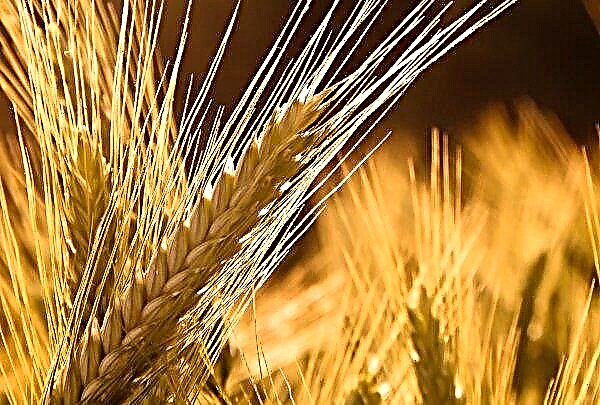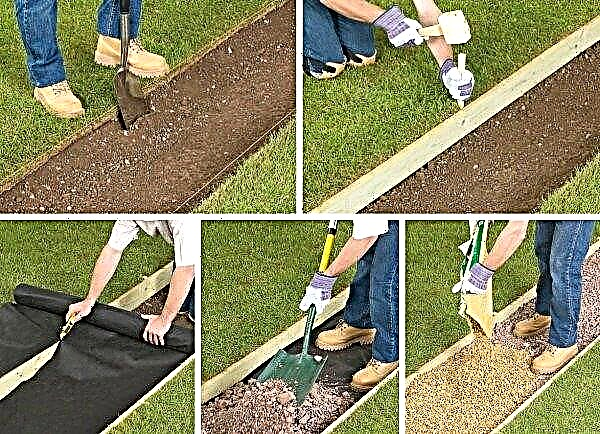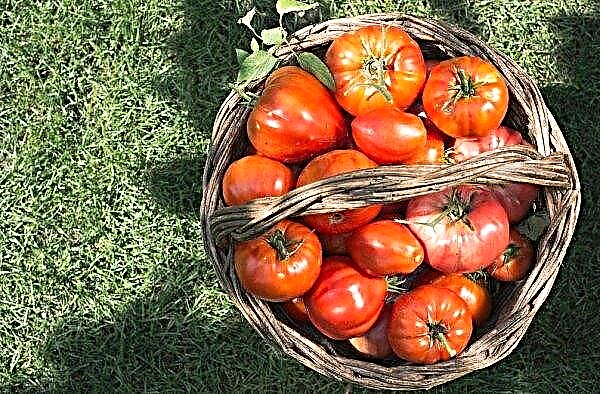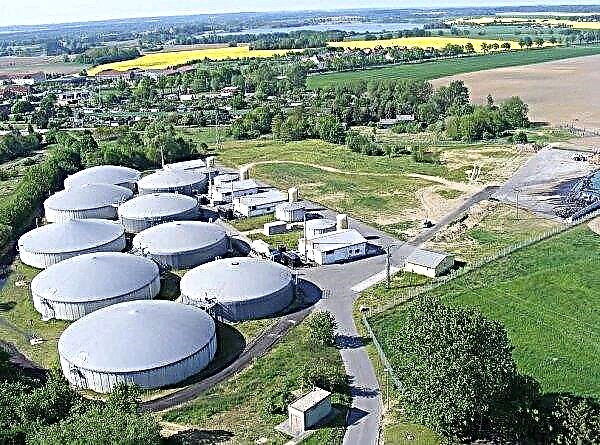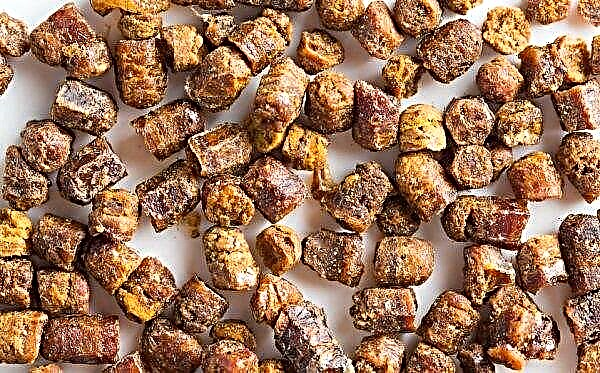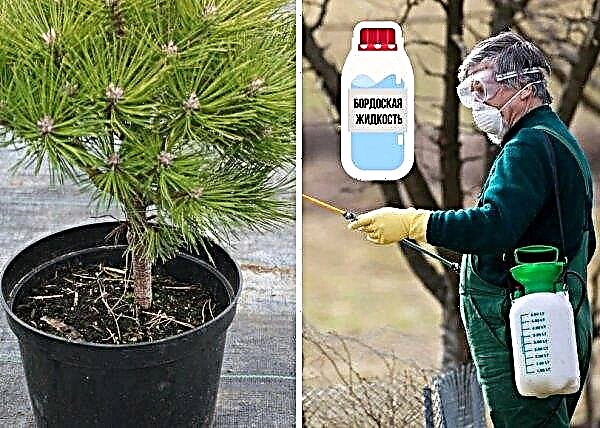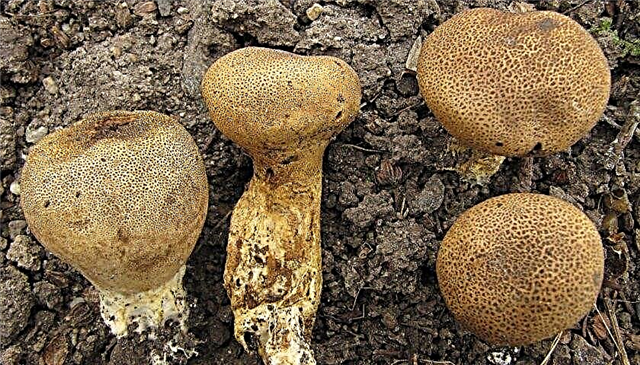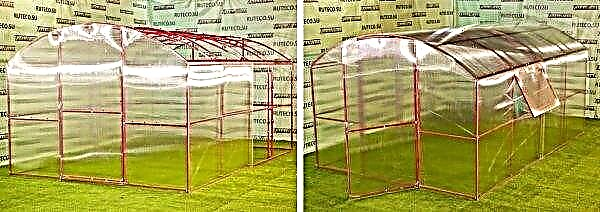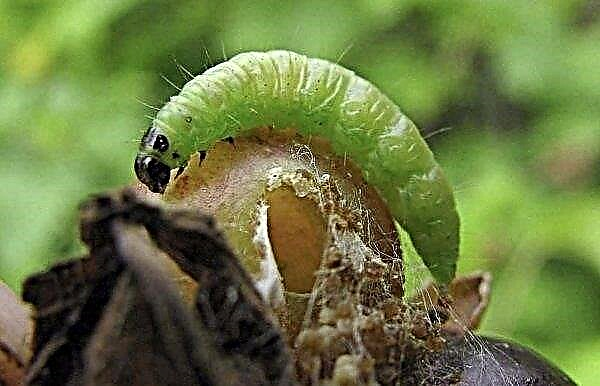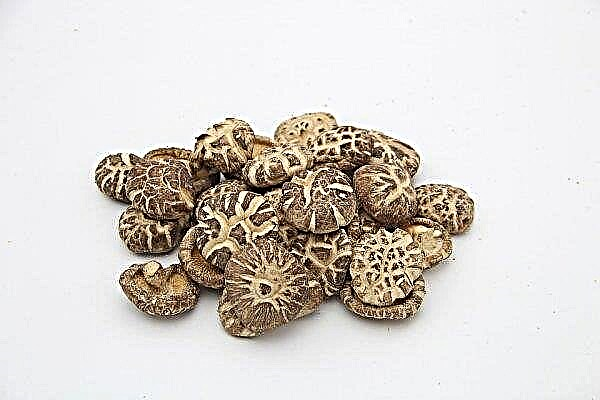If there are no ovaries on powerful and healthy bushes of tomatoes, the weather, pests, or other factors may be the reasons. It also happens that tomatoes bloom and the ovaries fall. They solve the problem by spraying with special preparations and creating favorable conditions for the formation of ovaries.
Reasons for a decrease or lack of ties
With the normal development of peduncles, pollen from the stamens falls on the pestle and fertilizes the flower. But if for some reason pollination did not occur, then such ovaries begin to crumble. A common source of this phenomenon is the stress experienced by the plant.
Therefore, the reasons for the lack of ovary can be:
- Temperature condition. Tomatoes are thermophilic, therefore it is important to observe the correct temperature: at night - within +13 ... + 21 ° С, and in the afternoon about +21 ... 29 ° С.
- Humidity. Normal humidity is 40–70%. Pollen will not develop in a dry microclimate; if it is too humid, existing flowers begin to crumble.
- Lack of pollination. Tomatoes are pollinated by wind, insects, touching the bush. If pollination does not occur, then you just need to shake the bushes (tap the trellis) to help the process.
- Inadequate watering. The earth should be evenly moist during the growing season for the development of a healthy root system, which positively affects the formation of brushes.
- Excess nitrogen. It is observed in the form of too powerful stems, undeveloped root system and lack of ovaries.
- An excess of green mass of the bush. If you do not remove the stepsons, then energy and nutrients are spent on leaf growth and also form few ovaries.
- The lack of trace elements: phosphorus and potassium. With a lack of trace elements, the ovules are formed in a small amount.
 The ovary does not fall suddenly. You can notice the problem by yellowing the stem of the peduncle and take action in time. If the plant is constantly in extreme conditions, then it stops development and focuses on survival.
The ovary does not fall suddenly. You can notice the problem by yellowing the stem of the peduncle and take action in time. If the plant is constantly in extreme conditions, then it stops development and focuses on survival.Did you know? So that insects actively pollinated tomatoes - plant honey flowers near.
Microclimate
High temperatures during the summer are a common cause of reduced flowering of tomatoes. Tomato flowers often fall if the air temperature rises to +30 ° C and lasts for a day. The pollen will lose its ability to fertilize. And at temperatures below +15 ° C, the plant stops growing and at the same time loses its ability to create pollen.

Also, tomatoes can be weakened by fluctuations in day and night temperatures - this is especially true for those that are grown in open ground. In order for the fruits to set in, the plant must be strong and healthy.
Extremely dry or humid air interferes with fertilization. Flowers under the influence of dry or very humid air (below 40% or above 70%) cannot be fertilized properly, therefore they dry up and fall off.
Excessive humidity is felt in the greenhouse immediately after watering - the “greenhouse effect”. In this case, the pollen begins to stick together in large lumps and falls off without pollinating the ovary. These conditions are favorable for the development of various fungi and pests. Good reduction of humidity will help high-quality ventilation. In those cases when the weather is hot for a long time and the air dries up, water the malls and they will increase the humidity to acceptable levels.Did you know? The birthplace of tomato is South and North America. Wild tomato is a perennial. Its name translates as "big berry."
Lack or excess of nitrogen
We advise you to familiarize yourself

In this case, you need:
- feed tomatoes with phosphorus;
- reduce watering;
- remove excess leaf mass.
It is also always important to remove stepsons in a timely manner.
A plant may lack nutrients such as potassium. In this case, you will need to feed the tomatoes with urea.
Important! Potassium enhances the acidity of the soil. To avoid this, consider the initial state of the soil before applying fertilizer. From an excess of potassium, the plants dry out because the ability to absorb nutrients is blocked.
Diseases and Pests
They like to eat tomatoes and some insects. Butterfly-scoop gnaws flowers and ovaries of ground plants, and whitefly prefers greenhouse tomatoes. To notice the appearance of pests in time, set traps for insects. This allows you to start the fight with the appearance of the first pests on plants. It is also recommended to spray tomatoes with pest preparations before flowering for prevention. It is not advisable to spray plants directly during flowering.
Among the insects that cause damage to the ovaries, the most common:
Excessive moisture can be the root cause of damage to the plant by fungi. As a result, the entire plant or its parts perishes. Fungal diseases are a common cause of poor yields.
Other reasons
Other reasons for the lack of ovary relate to the conditions in which the tomatoes grow:
- Plants that grow in the shade poorly form an ovary due to a slowdown in photosynthesis.
- Improper fast watering with cold water slows down growth processes. It is often found among summer residents who come on weekends and tend to very quickly water drooping plants.
- Wrong seeds - collected from hybrid varieties (the letter "F" next to the name of the variety), these seeds most often do not yield the next year.
- Lack of strength in the plant (weakened bush) to form an ovary.
- Excessive fruit. If the bush has formed too many fruits, they begin to compete for nutrition, so some of the ovaries fall.
- Chemical treatment, which affected the process of pollination or the formation of peduncles.
How to process tomatoes for fruit set
If the tomatoes do not bloom, then you should not expect a good harvest. To enhance flowering, it is necessary to organize foliar dressing in order to eliminate climate defects and provide additional incentives to increase productivity. For feeding, synthetic or organic substances can be used. If the problem is only in falling flowers, then inspect the plants and establish the cause of the falling or absence of ovaries. The lack of minerals is manifested in the poor development of the bush and ovaries.

It appears as follows:
- lack of nitrogen - leaves turn yellow from the bottom up the plant;
- lack of phosphorus - leaves acquire a purple hue;
- lack of potassium - leaves discolor from the edges to the center and dry.
Pests can be detected visually and through traps. When they are detected, appropriate insecticides are used. The most popular drug is Aktara. The insecticide is used during the growing season in many vegetable crops.
For tomatoes, Aktaru is bred in 2 dosage options:
- 2 g per 10 l of water for root watering;
- 1.2 g of the drug per 10 l of water for spraying.
Did you know? It is very simple to see whether pollination has occurred: the petals of such flowers are open and bent back.
Chemicals
Any adverse effect significantly affects the crop: plant growth slows down, ovaries do not form, small fruits form. To increase the stability of tomatoes and reduce the influence of adverse factors on fruiting, growth stimulants are used. These are plant hormones involved in all biological processes.
Growth Stimulants:
- provide resistance of tomatoes to adverse weather factors;
- stimulate the development of plants;
- improve resistance to pests and diseases.

To stimulate the flowering of tomatoes, the hormone gibberellin is necessary. It is produced by several enterprises and is contained in the preparations "Ovary", "Bud". When using stimulants, be sure to follow the dosages indicated on the package.
Boric acid
Boric acid for tomatoes is a quality insecticide and stimulant. This is a colorless, odorless substance that dissolves in water at a temperature of about +50 ° C, forming a slightly acidic solution. In nature, the substance is found in thermal springs as a sassoline mineral. Processing tomatoes with boric acid enhances flowering, promotes the formation of ovules and effectively resists fungal diseases.
Video: Boric Acid Solution for Tomato Ovary
As soon as budding begins, it is necessary to top-up with boric acid. For spraying plants, it is necessary to dissolve 1 g of boric acid in 1 l of warm water (+50 ° C). The consumption rate is 1 liter of solution per 10 m² of beds. Repeat the treatment after 10 days in the same dosage.
Ovary
Zavyaz stimulator is produced by Orton, Russia. It is delivered in small packages of 2 g. It can be applied to many crops, including tomatoes. The main task is to strengthen the formation of ovules and contribute to their strengthening.

According to the manufacturer, "Ovary" is able to increase productivity by 30% and accelerate ripening. The drug also increases resistance to adverse conditions: excessive temperature or humidity, frequent temperature changes and others. To process tomatoes, you need to dissolve 2 g of the stimulant in 1 liter of water. It is advisable to spray tomatoes three times: at the stage of budding, during the formation of brushes (second and third). Brushes are sprayed very carefully, so that as much of the solution as possible is applied directly to the ovaries.
Important! All root top dressing is applied only to soil already watered with water. It will be optimal to water in the evening, and top dress in the morning.
Tomaton
The stimulator "Tomaton" was created in 2006 with the aim of improving the fruit formation of tomatoes. Available in plastic ampoules. To prepare a solution, 1 ampoule "Tomaton" is dissolved in 0.5 l of water. A drop of detergent is added to the solution.

The drug can be used in 2 ways:
- dip the brushes in the resulting solution;
- spray the solution onto the brush with a spray gun.
Potassium and phosphorus
Potassium and phosphorus are necessary for tomatoes at any time of development. But to achieve better results, you need to adhere to the timing of the dosage and dosage. Usually 1-2 g of the drug is dissolved in 10 l of water and fertilizer is applied either under the root or the plants are sprayed.
Most often, potassium and phosphorus are introduced as part of complex fertilizers. Complex phosphorus-potassium fertilizers include the Agrofoska drug, which is produced by OVI TM in 1 kg packages.
The composition includes:
- phosphorus;
- potassium;
- calcium;
- magnesium;
- zinc;
- nickel;
- copper;
- cobalt.
The drug not only stimulates the budding and growth of the plant, but also enhances the regeneration of beneficial bacteria in the soil. The rate of introduction of the drug is 60 g per 1 m² in the root zone. The drug is added before flowering.
Potassium sulfate is also considered an excellent tool due to the fact that sulfur is part of the composition. Sulfur compounds help to “turn on” the genes responsible for flowering. This enhances the development of ovaries and their strength. Potash fertilizers are necessary during the growing season, so their peak application must necessarily occur during the flowering period.Did you know? The first phosphate fertilizers were obtained in the 19th century in England from animal bones treated with sulfuric acid.
Partenokarpin BIO
Partenokarpin-BIO is also a natural stimulant that enhances tomato growth. The manufacturer of the drug is Orton. The composition contains boron that improves fruiting. It also accelerates the development of flowers and reduces their fall. The drug improves the taste and size of the fruit and accelerates fruiting by 2 weeks.
Partenokarpin-BIO is supplied in ampoules. To prepare a solution, 1 ampoule is dissolved in 0.5 l of water. The finished solution is treated with tomato brushes. Processing is carried out in the flowering phase.
Folk remedies
Folk remedies to strengthen the formation of ovaries are not scientifically proven, but are based on the plant growth features noticed by gardeners.
Among these:
- root dressing with honey water;
- top dressing with iodine solution;
- spraying with milk-iodine solution.
Honey
Honey is considered an effective tool for strengthening the root system of the tomato. Therefore, an aqueous solution of honey is recommended for top dressing some time after planting. For watering 1 tbsp. a spoonful of honey is dissolved in 1 liter of water and applied to the soil.

Serum
A mixture of whey (1 l), iodine (20 drops) and hydrogen peroxide (25 g) is an effective remedy against late blight and contributes to higher productivity. Plants are sprayed with this solution once every 2 weeks. The mixture also nourishes the plant with biologically active substances that are present in serum.
Iodine
Gardeners noticed that if you water the tomatoes during the development of the buds with iodine solution (2 drops per 4 liters of water), then the brushes become stronger and the ovaries develop perfectly on them. In terms of biochemistry, tomatoes do not need iodine. But an opinion about its benefits still exists.
Important! To check the correctness of folk recipes, treat only part of the tomato with a product and compare the results in two groups. This will allow you to get your own data on the effectiveness of folk remedies.
How to process tomatoes for the tie
So that the ovaries are properly formed and pollinated, follow the basic rules of agricultural technology:
- if the temperature drops below normal or there are sharp changes in day and night temperatures - treat the plants with growth stimulants;
- Do not water in high humidity;
- if it often rains, alternating with heat - treat plants from late blight;
- in the absence of wind, help the tomatoes pollinate - shake the bush;
- if the leaves change color - look, a sign of a lack of which trace element is this, and apply the appropriate fertilizer;
- spray in the morning or in the evening so that the solution has time to completely absorb, and not evaporate in the sun;
- for spraying, choose a calm day and spray the plants so that the solution falls exactly on the ovary;
- water for spraying should be warm (about +20 ° C) otherwise the plant experiences a shock and does not completely absorb nutrients.
Preventative measures
A good crop can be harvested only when all measures have been completed at all stages of plant cultivation.
Among them:
- proper seed selection - do not collect seeds from hybrid varieties, they will not show a good harvest for the next year;
- disinfect seeds before planting;
- prepare the soil correctly;
- timely feed all;
- monitor the correct temperature and humidity;
- control the appearance of pests and take timely action.
Did you know? Like a vine, a tomato stem can take root anywhere. Therefore, if the seedlings are too long, then when planting, part of the trunk is laid in the hole. The root system of such a bush will turn out to be more powerful.
Do not forget that it is important not to overfeed the tomatoes with additional nutrients, as this will also lead to a decrease in yield. Alternate organics and mineral nutrition to achieve better results.


